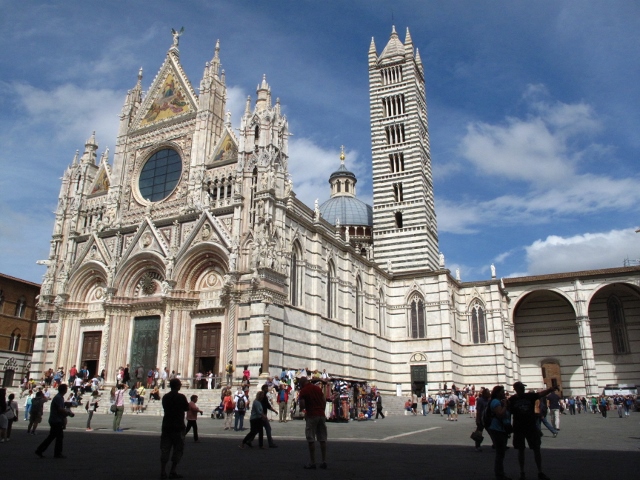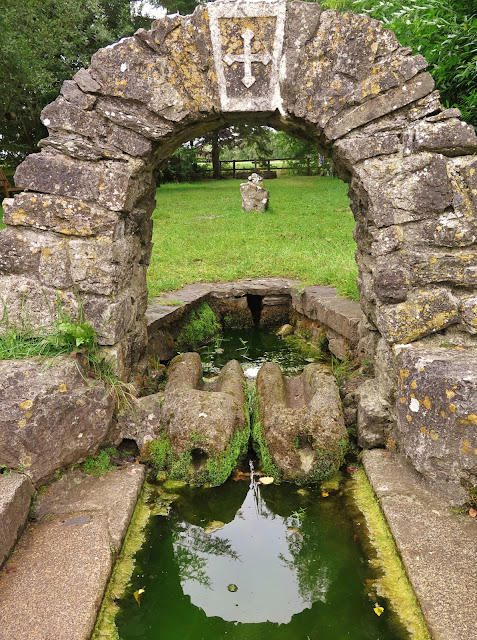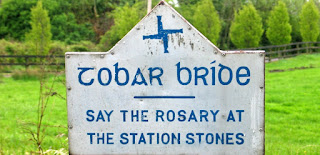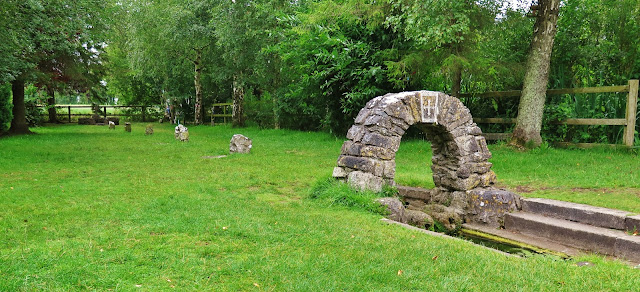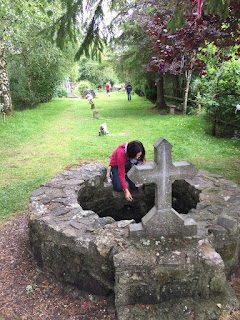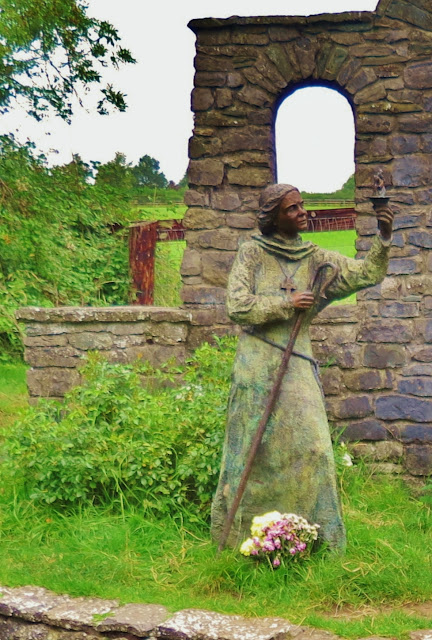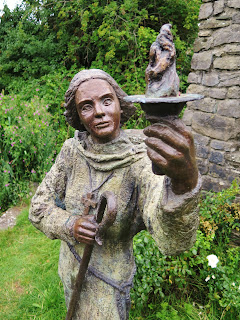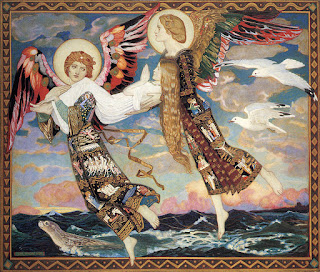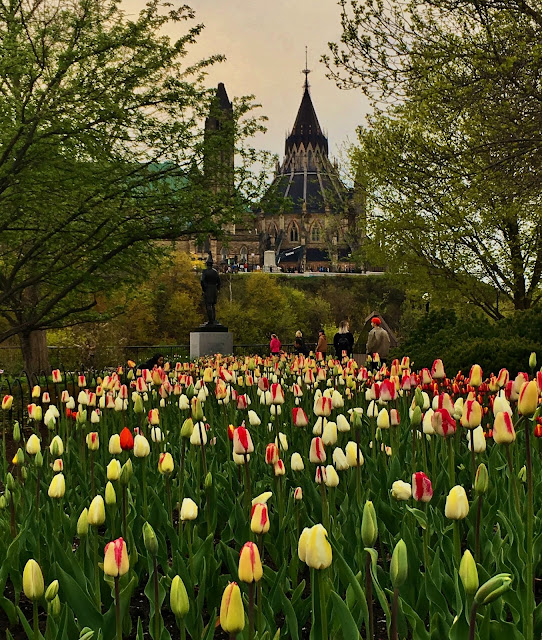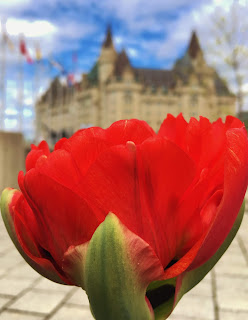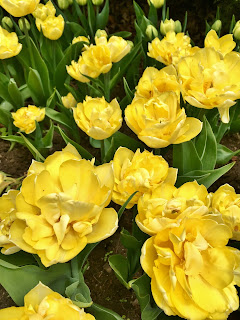Siena's beautiful red brick historic centre is a Medieval maze of streets seemingly frozen in time. Siena offers shops full of the best Tuscan gourmet foods, wines and hand-painted ceramics.
I had no expectations or agenda set going to Siena, which is why the town may have delighted me so much. Other than the crazy bareback horse race called "The Palio" that consumes the city of Siena every summer, I didn't know much about the town at all. I knew Siena was Florence's bitter archrival during the middle ages until it was struck by the plague in 1348. Yet, whenever I asked people for advice on where to visit in Tuscany, I always received the reply "Siena; you will looooooove Siena!"
 |
| Il Campo |
Siena is only 56 km or 35 miles from Florence and makes a perfect one-day side trip from Florence.
Driving to Siena from our week-long base in Cortona was very easy to do, and the 45-minute drive across the Valdichiana was absolutely stunning. Every hilltop we sped by seemed to be crowned with a little village just begging to be explored. Siena is also perched atop a hill, with all its narrow streets gently spilling down into a valley like an ochre waterfall.
Siena's historical centre or "centro storico" is a car-free zone. We found cheap parking under the bleachers at the soccer stadium just follow the signs for "Stadio" to get to the Stadium. Public parking at the Stadio is about €2/hr and is the same price as the Fortezza parking nearby. A short walk from the stadium and one is emersed in a medieval wonderland.
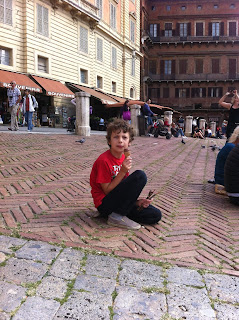
Navigating your way through the jumble of medieval walls
to the main square in the centre of town is easy; just look for the 100 metres, (330 foot) tower called "La Torre del Mangia." This round "square" is unarguably Siena's heart and the best way to get your bearings on a map, and if you can not see the tower, just listen for the bells. Piazza Il Campo is where the 17 neighbourhoods of Siena or "contrade" come together. Il Campo is also the site of the famous Palio, a no holds barred bareback horse race between 10 of the 17 contradas. This race has been taking place twice a summer; July 2 and August 16 since the 1600s. To visit Siena during the Palio, check out the website www.ilpalio.org for tickets and information.
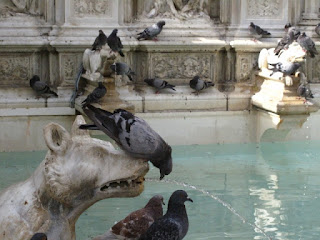 |
| Pigeon heaven is the Fonte Gaia. |
Piazza del Campo has got to be my favourite Piazza in Italy so far; it looks like a giant brick scallop shell. The red "Campo" gently slopes towards the "Pallazo Publico" or City Hall in the center. I was here in mid-September, and Il Campo was a magnet for folks just sitting and sprawling out on the warm bricks. Equipped perhaps with a gelato in hand, you can relax and enjoy the great Italian sport of people-watching.
I could just stretch out on the warm red bricks of the piazza all day and relax listening to the bubbling "Fonte Gaia" behind me. The Fountain of Joy is the highest point of Il Campo and where the citizens of Siena used to come and fill up their water buckets. Now it is a fun place to watch the pigeons take a batch and take sips of water from the she-wolves mouths.
 |
| Contrada della Lupa |
It was time to explore the streets of Siena and head towards the famous cathedral, the Duomo of Siena. I loved navigating the twisting medieval lanes and walking under the arched alleyways. It was interesting walking through the different "contradas" or neighbourhoods that are all animal-themed. Siena was on the main trade route from France to Rome, and many of these narrow alleys you walk today were filled with pilgrims and merchants. Siena was a super-power in its heyday, its streets lined with shops and banks where wealthy merchants deposited their money for safekeeping. In fact, the first bank in Italy was in Siena.

There is some great shopping here too, especially for foodies. Look for signs in store windows saying "prodotti tipici" or "local products." I bought the best spice mixes here, as well as local cookies called "ricciarelli," which are chewy macaroon & almond delights. Another local delicacy is delicious fruitcakes called "panforte" that are only made in Sienna. See my blog post for more on: Foods of Tuscany
Other souvenirs s to buy are silk scarves with the different Contrada flags, local wines and beautiful pottery with hand-painted sunflowers and other local designs. I purchased a bowl and a bunch of hand-painted wine stoppers as gifts to bring home. It was not cheap, but this is not mass-produced; it is traditional craftsman art, and it is worth every penny to me. Especially since the shop owner was the artist, who made it by hand. Bellissimo!
On to Siena's crowning glory; the Duomo. The city of Siena has changed the pricing of its Duomo. When we were there in 2013, it was 3 to enter the cathedral and extra for the museum. Now in 2019, there is a combo pass ticket where the Duomo, library, museum, baptistry, crypt and everything else is included for €15 if you purchase tickets online. Or if you buy your tickets at the door, the price is € 17. Folks, it is totally worth it! These precious pieces of art need to be preserved, restored and protected and that all costs significant amounts of coin!
Siena's Duomo was incredible. The candy cane stripes decorating the outside 0f the Duomo continued on the inside, and every single surface was covered in a piece of beautiful art. I can imagine simple pilgrims walking in here and falling to their knees in awe! There are priceless Michelangelo, Donatello and Bernini statues. Your eyes just don't know where to look because it is 360 degrees of grandeur. The Piccolomini Library, with its original 550-year-old frescoes, was simply stunning!
My 11-year-old son Liam was SO reticent and patient in the Cathedral, and I thought he was overwhelmed by the crowds. in reality, he was really just counting all the naked "bits" in the paintings on the ceiling! This is where my child's OCD comes in handy. Liam was still counting penises from when we arrived in Rome a week ago (he is into the hundreds now). I had another Mom lament to me that she wishes her two children were as well behaved & attentive to all the art as my son is. I almost blurted out, "oh no, he is just counting penises," but I decided to seize the moment to be a shining parent and just thanked her for the compliment. 😈
 |
| Piccolomini Library |
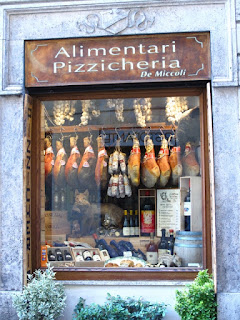
Grabbing a cheap lunch in Sienna was easy, we hit the "panini" shop for made to order sandwiches. The best sandwiches are found at Alimentari Pizzicheria De Miccoli located near Il Campo. TIP: smile and point if you don't know the Italian words for the different deli items. Just don't expect any mustard, mayonnaise or other North American condiments to be available for your panini. The fresh, wonderful Tuscan flavours are all you need to satisfy your taste buds.
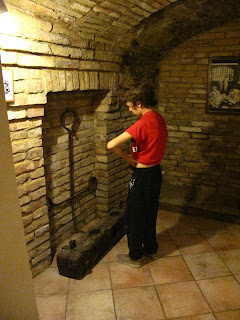 |
| Torture Museum |
We were wandering around after lunch when we passed by the Medieval Torture Museum, and Liam begged to go in. I told Liam that all the guidebooks warn you that this museum is a rip-off and that it wasn't suitable for children anyway. Liam made a good case that he wanted to explore something HE was interested in. After all, it only seemed fair after every castle, church and museum I dragged him into. Actually, the museum had very good (yet gruesome) displays in English with original museum pieces; and the multi-level medieval building itself was quite beautiful and unusual. However, the subject matter was so horrid that I had to sit down and cry at one point.
 |
| A real Iron Maiden |
The hideous journey through human cruelty of the Museo della Tortura was such a harsh contrast to the beautiful art in the Duomo, with one thing in common: RELIGION. This contrast was not lost on 11-year-old Liam, and he learned a lot about the horrors of the witch hunts in Europe and how horrible humans can be to one another. For information on the Siena Museo delle Tortura click HERE. They also have museum locations in San Gimignano, Volterra, Lucca and Montepulciano.
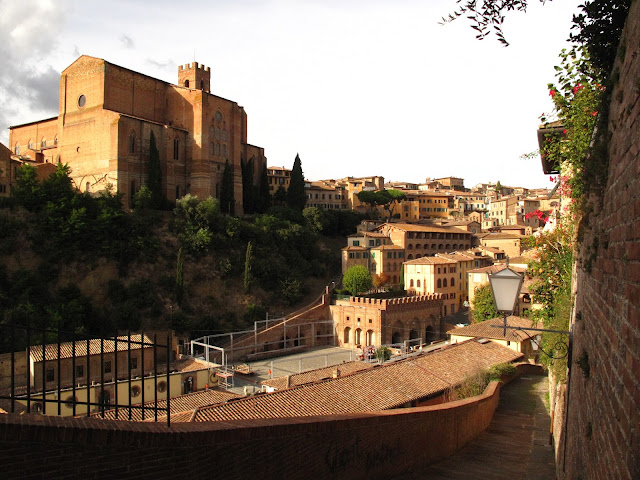 |
| Sun goes down on Siena's San Domenico with Fonte Branda below. |
Now Siena has become a favourite Tuscan city, and when someone mentions Siena, I get a faraway look in my eyes and moan; "Siena, oh I loooooved Siena."

